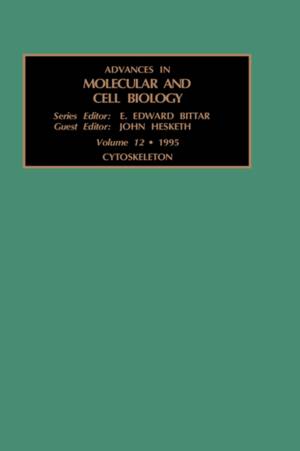
- Retrait gratuit dans votre magasin Club
- 7.000.000 titres dans notre catalogue
- Payer en toute sécurité
- Toujours un magasin près de chez vous
- Retrait gratuit dans votre magasin Club
- 7.000.000 titres dans notre catalogue
- Payer en toute sécurité
- Toujours un magasin près de chez vous
Description
It is now clear from a wide range of research that cytoplasm is not merely a buffered solution of proteins and enzymes but contains a series of complex filamentous structures. The cytoskeleton is the collective term given to these filaments. There is a considerable amount of data available on the protein composition of the major filament systems (microfilaments, microtubules, and intermediate filaments) but we are still comparatively ignorant about the role of the cytoskeleton in cell physiology. However such major cytoplasmic components (actin and tubulin, the monomeric constituents of microfilaments and microtubules, are major cell proteins) must have important roles to play in cell function, and investigations into the functional role of the cytoskeleton currently represent a major area of cell biological research.In recent years rapid advances in molecular biology have begun to influence research on the cytoskeleton. This trend is sure to continue and the techniques of molecular biology and genetics are set to make major contributions to our understanding of the cytoskeleton, as illustrated in this volume by several reviews; the use of transfection techniques by Ben-Ze'ev, the power of Drosophila genetics is described by Fyrberg and the major advances made in the inesin field using molecular approaches as described by Cyr et al. The chapters by Fyrberg and Cyr et al. also illustrate two other areas where major advances in our understanding of the cytoskeleton is occuring; the great array of different motor proteins involved in intracellular movements and the study of the cytoskeleton in developmental biology. Overall, Volume 12 in this series illuminates our increasing knowledge of the important roles of the cytoskeleton in cell function, particularly how it is central to metabolic organization, intracellular transport, interactions with matrix, and nerve function. Our knowledge of the cytoskeleton is now reaching a stage where it is clear that abnormalities in the organization of the cytoskeleton can lead to important clinical manifestations of disease; an example of how such research is now impinging on medical science is presented in the final chapter by Lane on keratin diseases.
Spécifications
Parties prenantes
- Auteur(s) :
- Editeur:
Contenu
- Nombre de pages :
- 252
- Langue:
- Anglais
- Collection :
- Tome:
- n° 12
Caractéristiques
- EAN:
- 9781559388450
- Date de parution :
- 19-10-96
- Format:
- Livre relié
- Format numérique:
- Genaaid
- Dimensions :
- 156 mm x 234 mm
- Poids :
- 530 g







